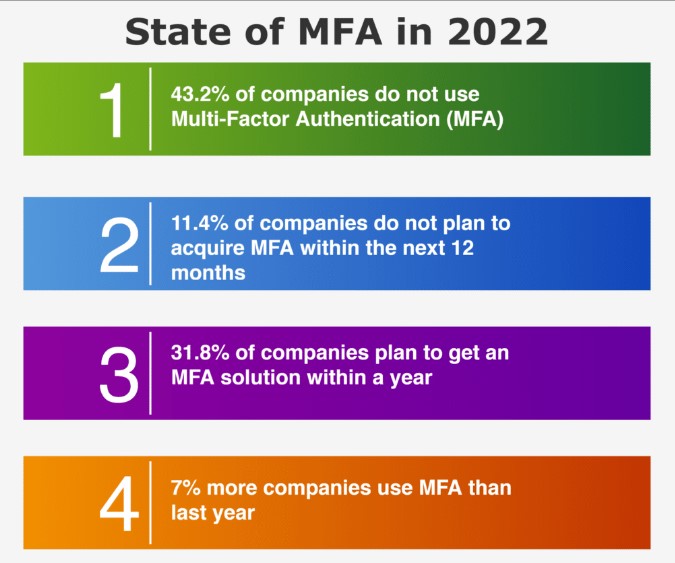With each passing year, the importance of cybersecurity in our personal and professional lives continues to grow. As we step into the year 2023, it is crucial to understand the evolving threat landscape and prepare ourselves for potential cybersecurity pitfalls.
In this article, Anti-Dos will discuss the top 10 cybersecurity pitfalls that you should avoid at all costs to keep yourself and your organization secure.
10 Cybersecurity Pitfalls You Should Avoid At All Costs
Here are ten cybersecurity pitfalls you should be aware of and never fall for at any cost.
1. Lack of Employee Cybersecurity Training:
Employee cybersecurity training is crucial in creating a strong cybersecurity culture within an organization. Most security breaches happen due to human error, such as employees clicking on malicious links or downloading malware. Providing regular training to employees on how to identify phishing emails, how to use strong passwords, and how to recognize potential cyber threats is essential to prevent such incidents. Organizations must also educate employees on the importance of keeping their software and systems updated and how to report potential security incidents.
2. Failure to Regularly Update Software:
Software updates often contain security patches that fix known vulnerabilities that can be exploited by cybercriminals. Failing to update software regularly can leave systems and networks vulnerable to cyber attacks. Many software applications now provide automatic updates, making it easier for organizations to stay up-to-date with the latest security patches. Organizations must ensure that all software used within the organization is updated regularly.
3. Poor Password Management:
Weak passwords or password reuse across multiple accounts are significant cybersecurity risks. Organizations must enforce strong password policies and encourage employees to follow password best practices. Employees must use unique, complex passwords and change them frequently. They should also encourage the use of password management tools that can help generate and securely store passwords.

4. Insufficient Access Controls:
Access controls limit access to sensitive data and systems to only authorized personnel. Without proper access controls, employees or external attackers can access sensitive information, which can result in data breaches or other security incidents. Organizations must implement strong access control policies, such as two-factor authentication, to ensure that only authorized personnel can access sensitive information.
5. Neglecting to Monitor Network Traffic:
Monitoring network traffic can help detect potential security incidents and prevent cyber attacks. Organizations must implement network monitoring tools that can detect unusual network activity, which may indicate a cyber attack. Network monitoring can also help identify vulnerabilities in the organization’s systems, allowing them to be fixed before they can be exploited by cybercriminals.
6. Lack of Encryption:
Encryption is essential for protecting sensitive data from cyber threats. Without encryption, sensitive data may be compromised, resulting in significant financial or reputational damage. Organizations must implement encryption solutions to protect sensitive data at rest and in transit.

7. Failure to Regularly Backup Data:
Regular backups are essential for recovering from data loss due to hardware failure, human error, or ransomware attacks. It is crucial to regularly backup data to prevent data loss and ensure business continuity. Organizations must implement a backup strategy that ensures the safety and accessibility of their data in the event of an incident.
8. Insufficient Physical Security:
Physical security is often overlooked, but it is essential in preventing unauthorized access to critical systems and data. Organizations must implement access controls and surveillance systems to prevent physical breaches. This includes controlling access to data centers, server rooms, and other critical infrastructure, as well as monitoring physical access to the organization’s premises.
9. Ignoring Multi-Factor Authentication (MFA):
Multi-factor authentication is a security mechanism that requires users to provide multiple forms of authentication to access a system. MFA is essential in preventing unauthorized access to sensitive systems and data. Organizations must implement MFA for all critical systems and applications to ensure that only authorized personnel can access them.

10. Poor Incident Response Planning:
Incident response planning is critical in minimizing the impact of security incidents. Organizations must develop and test incident response plans to ensure they can respond quickly and effectively to security incidents. Proper incident response planning can reduce the downtime and financial impact of a security incident. The plan should include a clear chain of command, escalation procedures, and steps for communication with stakeholders and law enforcement agencies.
Overall, by avoiding these top 10 cybersecurity pitfalls, individuals and organizations can significantly improve their cybersecurity posture and reduce the risk of cyber attacks. It is crucial to remain vigilant against evolving cybersecurity threats and take proactive steps to ensure the security of your system.
Conclusion
It is crucial to remain vigilant against evolving cybersecurity threats. By avoiding these top 10 cybersecurity pitfalls, individuals and organizations can better protect themselves against cyber attacks. As the threat landscape continues to evolve, it is essential to remain proactive in addressing cybersecurity risks and ensuring the security of our digital assets.
Did this article help you in understanding some of the biggest cybersecurity pitfalls? Share it with us in the comments section below.





Add comment